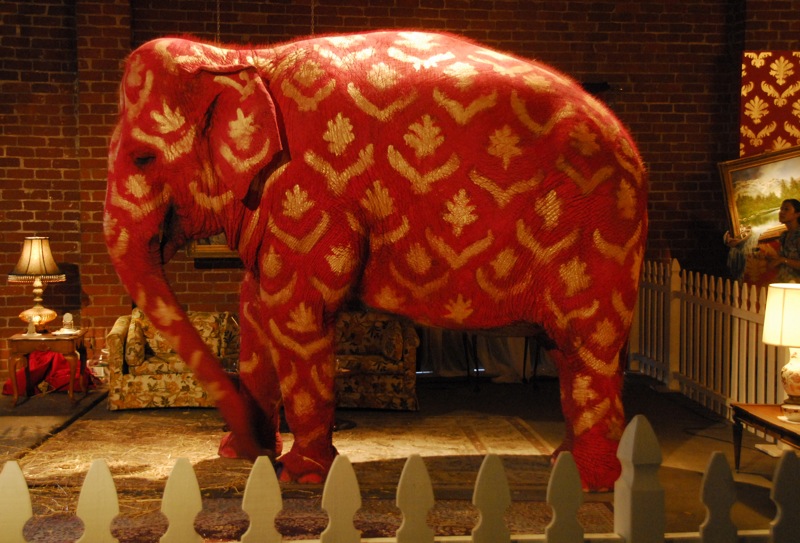
I was reading through Paul Johnson’s Darwin: Portrait of a Genius (2012) recently—not, I admit, with particularly high expectations. It's not just because there are plenty of excellent biographies of Darwin already, including Adrian Desmond and James Moore’s Darwin: The Life of a Tormented Evolutionist (1992) and Janet Browne’s Charles Darwin: Voyaging (1995) and Charles Darwin: The Power of Place (2002). The key reason: knowledgeable historians of science panned the book as shoddy and tendentious. In The Historian, for example, John van Wyhe complained of Johnson’s retelling “traditional legends” and inventing new ones, noting that, in discussing Darwin’s supposed influence on eugenics and imperialism, he offered “a guilt-by-association argument…normally made by creationists.” In Reports of the NCSE, John M. Lynch similarly complained (PDF) of “strange things” claimed by Johnson and noted the “not very subtle attempt to engage in polemic and guilt by association.”
I found myself agreeing. And here’s a single example, centering on a single passage from Darwin’s Origin, to show why. Johnson praises the Origin as “a cleverly written, superbly presented, and even a cunningly judged book”—but adds, “it was, and is, open to one objection.” What is the One Objection to Rule Them All? For Johnson, it is the unargued assumption of the cruelty of nature. Instead of providing evidence or even examples, Darwin elects “to use a selective, repetitive[,] and emotional vocabulary of strife.” One of Johnson’s examples of Darwin’s doing so involves the sentence “The elephant is reckoned to be the slowest breeder of all known animals, and I have taken some pains to estimate its probable minimum rate of natural increase: it will be under the mark to assume that it breeds when thirty years old, and goes on breeding till ninety years old, bringing forth three pair of young in this interval; if this be so, at the end of the fifth century there would be alive fifteen million elephants, descended from the first pair.”
Darwin’s purpose here would seem to be to illustrate what he describes as “the rule that every organic being naturally increases at so high a rate, that if not destroyed, the earth would soon be covered by the progeny of a single pair,” even in the case of the slow-breeding elephant. But according to Johnson, Darwin “terrifies the reader with a vision of ‘fifteen million elephants’ suddenly appearing if these creatures—whom he picks as the slowest in procreating—are allowed to do so unchecked.” A moment’s thought reveals a few problems here. First, the adjective “suddenly” seems unwarranted: Darwin’s fifteen million elephants appear over the course of five centuries. Perhaps more to the point, it hardly seems credible that the reader of the Origin would be especially terrified by the prospect of millions of elephants. I don’t underestimate the destructiveness of elephants, but if Darwin were seeking to terrify his Victorian readers with ravening hordes of extrapolated beasts, why wouldn’t he have picked wolves or crocodiles or tigers?
Undeterred by such elementary considerations, Johnson returns to the elephant example a scant dozen pages later, when he discusses the later editions of the Origin: “To his consternation, he found that the ‘mathematical expert’ who had ‘worked out the number of elephants that would emerge under Malthusian theory at 15 million’ had got his sums wrong, and the figure had to be made less frightening.” Johnson is right that Darwin discovered that the figure was in error. In a letter to the Athenaeum in 1869, the pseudonymous Ponderer reported a different calculation—in five centuries, by Ponderer’s reckoning, a breeding pair would produce “85,524 elephants, less the number that would have died by reason of their age”—and asked how Darwin obtained the fifteen million figure. Darwin responded by acknowledging his error—he relied, he admits, on “some Cambridge mathematician” he could no longer recall—and revising his estimate: “after a period of 750 to 760 years” there would be more than fifteen million, “namely, 18,803,080,” elephants.
The sixth edition of the Origin updates the figures accordingly. But is “nearly nineteen million elephants” “after a period of from 740 to 750 years” (as in the sixth edition) really “less frightening” than “fifteen million elephants” after 500 years (as in the first through fifth editions), as Johnson asserts? Or is it simply more accurate? What seem less than accurate, in any case, are the quotation marks in Johnson’s claim, around “mathematical expert” and “worked out the number of elephants that would emerge under Malthusian theory at 15 millions.” There are no citations provided for these words in Darwin: Portrait of a Genius, but they are not taken from Darwin’s letter to the Athenaeum, or from anything Darwin wrote, as far as I can tell. The fact that the distinctive phrase “emerge under Malthusian theory” appears nowhere on the internet (including Google Books) except in Johnson’s book suggests that the phrases are Johnson’s own, mistakenly—and sloppily—indicated as verbatim quotations from a source.
Johnson returns again to the elephant passage in discussing The Descent of Man (1871), commenting, “One wonders whether Darwin put this sort of information [about communal marriage] in to titillate or frighten the reader, rather like the imaginary ‘fifteen million elephants’ of Origin.” Well, perhaps one would so wonder, if one were disposed to accept Johnson’s implausible judgment about the purpose of the elephant example. But then it would be odd for one not to observe that the Descent includes a frightening reference to the superfecundity of elephants (“The slowest breeder of all known animals, namely the elephant, would in a few thousand years stock the whole world”) or a titillating reference to their polygamy (“‘it is rare to find,’ as Dr. Campbell states, ‘more than one male with a whole herd of females’”): all grist to one’s mill, surely. Or one might instead conclude that in seeking a hidden rhetorical agenda in the Origin’s choice of examples, one is overlooking a large pachyderm in the immediate interior environment.

